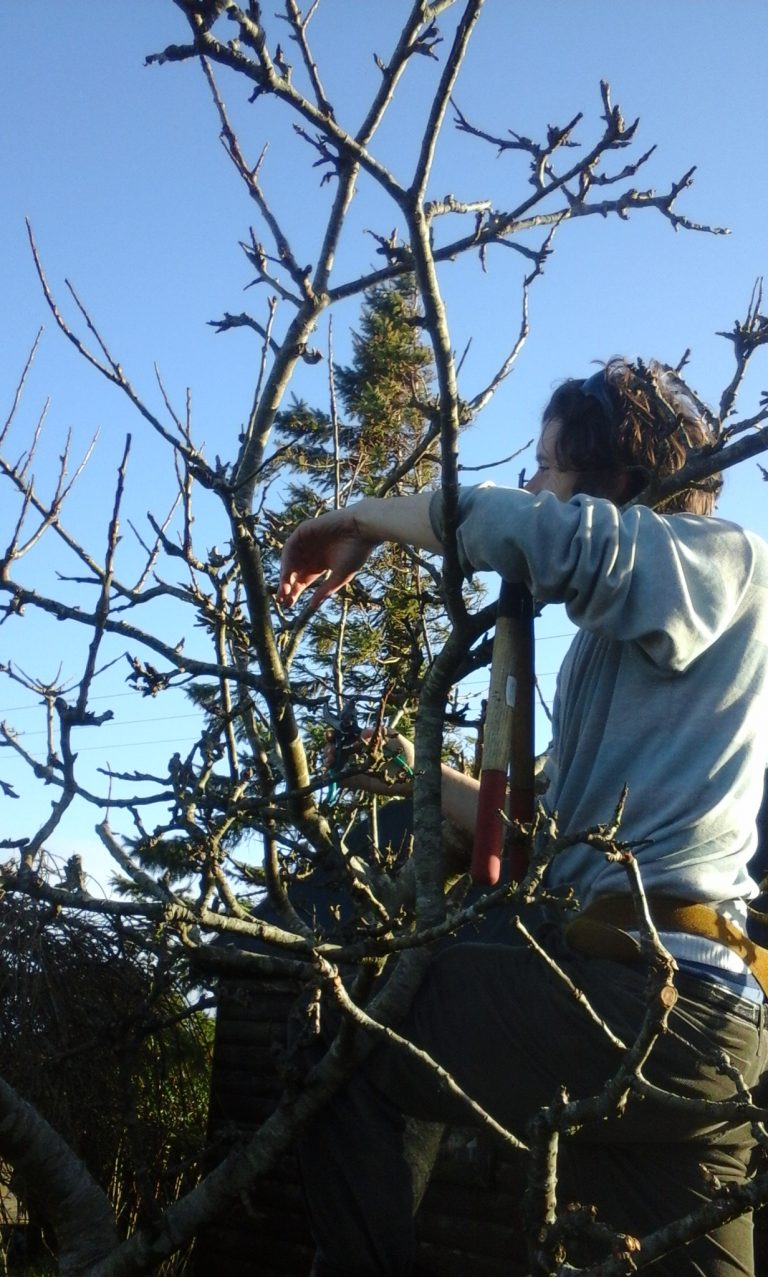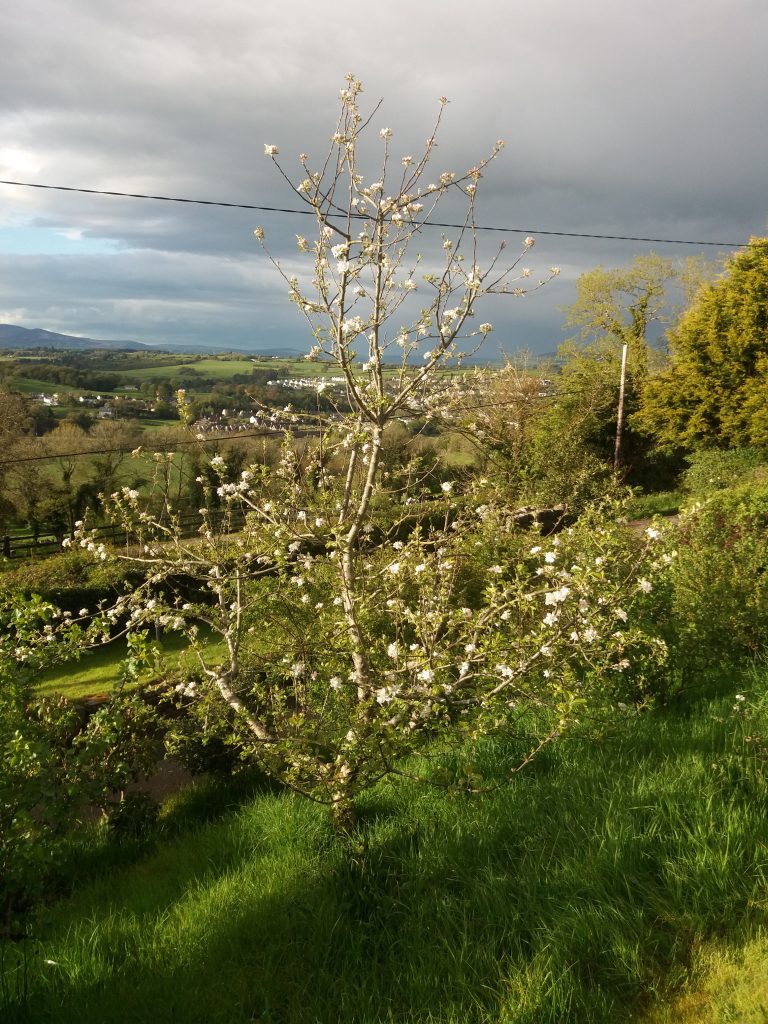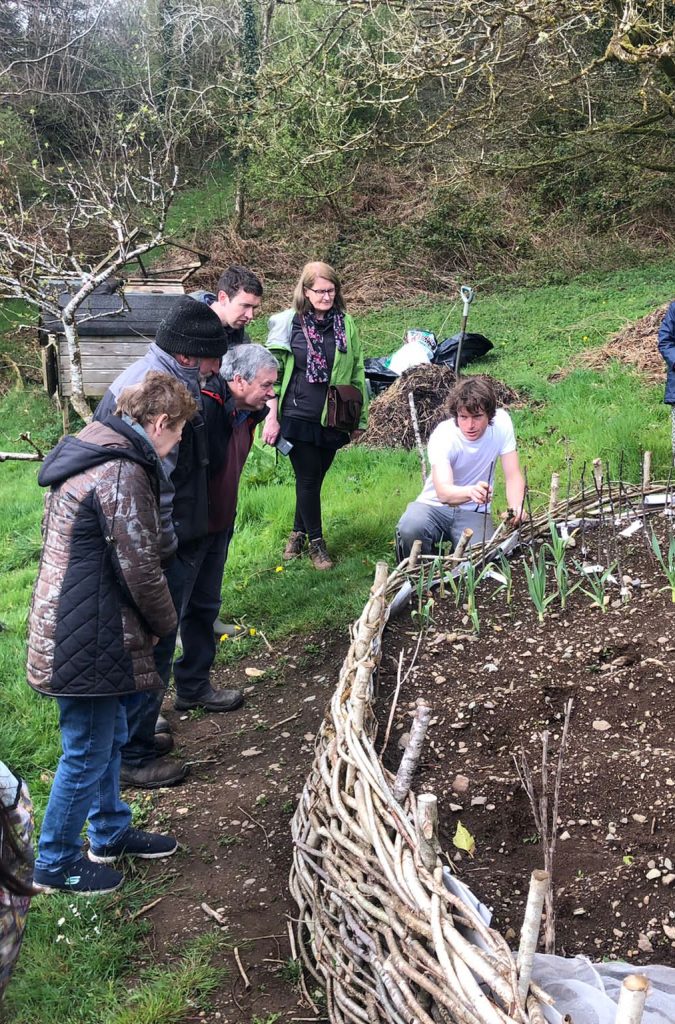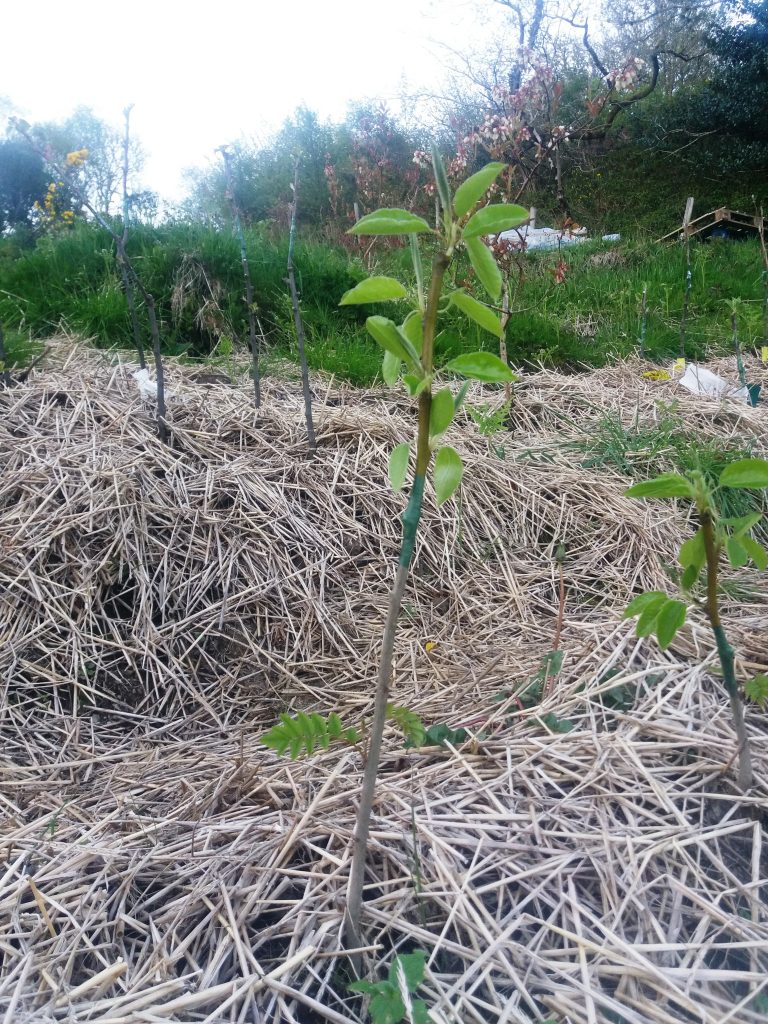Apple Pruning & Orchard Care Cork
I provide orchard care to customers in county Cork and where feasible at other locations across the south of Ireland. Get in touch for professional & experienced apple pruning and orchard care. My services include orchard design, forest garden design, planting, grafting and mobile poultry foraging systems. I have worked in hundreds of orchards and gardens on thousands of different individual trees. Just like us, each tree has its own history, is at particular stage of life and has particular living conditions. I take an holistic approach and aim to restore the health of each individual tree.



Beautiful Apples in West Cork
I love seeing orchards progress year on year and am especially pleased when they get to a natural equilibrium and condition where maintenance is minimised, requiring less labour and expense.
I’ve worked for John (pictured) on his orchard in West Cork for the last number of years and was delighted when he sent me these pictures of the fruit of the labour.
Is Apple Pruning Necessary?
 The biological reproductive aim of your fruit trees can differ from your human centered aims of high yield, the taste you like and large, accessible fruit. Almost all apples we eat come from trees that have been grafted. This gives us the variety of apple we want on a tree whose size and disease resistance characteristics will suit the site it will be grown on, if the orchard is well designed. Grafting also however fundamentally upsets the natural growing pattern in the early stages of the life of the young tree.
The biological reproductive aim of your fruit trees can differ from your human centered aims of high yield, the taste you like and large, accessible fruit. Almost all apples we eat come from trees that have been grafted. This gives us the variety of apple we want on a tree whose size and disease resistance characteristics will suit the site it will be grown on, if the orchard is well designed. Grafting also however fundamentally upsets the natural growing pattern in the early stages of the life of the young tree.
For the above reasons it usually becomes necessary to prune for healthy productive trees. My general approach where possible is to intervene to re-establish the natural growing pattern of the tree. In this case however a little knowledge can be dangerous – your tree will usually be better off untouched than pruned without the appropriate tools and knowledge. With that warning, please read on for a little knowledge on the subject 🙂
Winter Pruning
In the winter the sap will have fallen and the tree stores its sugars in the roots. Pruning done then will not really rob the tree of its energy, and so increased vegetative or leafy growth can be expected during the spring and summer after winter pruning, as a full tree’s worth of energy tries to express itself in the reduced tree size. Therefore I use winter pruning more to give structure and direction to younger growing trees and increase leafy growth in trees that are lacking vigour.
I winter prune apple, pear, medlar and cobnut trees generally from November to February. It’s a good time for disease removal as canker spores are less active. I winter prune on mature trees to a more limited extent and they may require subsequent summer pruning to re-balance the trees energy levels. The Irish Seedsavers Association run a great one day apple pruning course every winter at their site in County Clare, Ireland. I also run my own one day winter and summer pruning courses in West Cork.

Summer Pruning

In the summer however, some of the sap is up in the branches and leaves, so if we prune now we will rob the tree of some of its energy. This is very useful if the tree has too much leafy growth and too little fruiting wood or if a tree has outgrown its allocated area. Summer pruning is useful if it is desirable to limit the trees size for any reason. Summer is an especially good time to remove the vertical leafy water shoots that can shade ripening fruit. You can thin out apples too now if you want bigger apples (from the ones remaining on the tree).
Summer pruning is generally more important for mature trees. Dead and diseased wood can be a little more obvious in the summer due to an absence of leaves, but removing this can be done in the winter also. The overall structure of a tree is easier to assess in the winter for the same reason. I carry out summer pruning on mature apple and pear trees and all prunus species trees which includes cherries & plums.
Adopting a natural central leader shape as shown opposite helps minimise the need for sophisticated and labour intensive summer pruning every year.
Apple Tree Grafting - Conserving Heritage Trees
 Every year I get requests to graft scion wood from old beloved family heirloom trees that may be near the of their life or may be on property that is about to be sold out of the family. I love seeing the passion people have for these trees and I have successfully grafted every such project undertaken thus far. Get in touch if you want to pass on your old tree to the next generation.
Every year I get requests to graft scion wood from old beloved family heirloom trees that may be near the of their life or may be on property that is about to be sold out of the family. I love seeing the passion people have for these trees and I have successfully grafted every such project undertaken thus far. Get in touch if you want to pass on your old tree to the next generation.
In addition to the pruning service I can graft new varieties of fruit onto an existing tree in your orchard. This is to improve pollination chances if there is limited space for new trees or just to give more variety of fruit. Often people have only one or two apple or pear trees in their garden and these will benefit from more pollinating partners of a different variety. Here is a little review of The Grafter’s Handbook which is the classic text on grafting.
Apple Tree Grafting - Family trees


Pear Tree Grafting
Quince is used as the normal pear root-stock, but interestingly hawthorn and rowan are also viable root-stocks.
I have trialed pear on rowan root-stock in the nursery for the last two years with 80 – 90 percent success rate. In theory rowan will be a very suitable root-stock for wetter ground where pears cannot normally be grown.
I chose rowan over hawthorn as an alternative root-stock to quince as it doesn’t have thorns and so is easier to handle and graft. In the mature tree grafting that I have done so far, pear to rowan also seems more compatible than pear to hawthorn.
Stay tuned for updates on how these trees progress! We’ll be watching for growth, size, disease resistance, long-term graft compatibility and fruiting.

Medlar Grafting
Medlar is an interesting fruit that was popular in medieval times but has has since fallen out of fashion. It is a promising permaculture fruit for Ireland generally with few disease problems. I graft it onto hawthorn and we have a limited stock available at the nursery at home.
Forest Garden Design Ireland
Forest gardening has become increasingly popular and for many people is a symbol of permaculture. There are many variables and design considerations however and designs should always site specific. Even within Ireland there will be huge variations in what will work depending on local conditions. These variables include annual rainfall, sunshine, wind exposure, coastal exposure, soil type, depth and pH. Human influences, neighbouring plant species, pollinator availability and local pest populations will also have an impact.
Climate and Micro-climate in Ireland
There are eye-opening climate charts available on Met Éireann’s old website that show the huge climatic differences that occur across the island of Ireland.
Even within County Cork there are huge variations, for example Cork city gets less than half the annual rainfall of parts of West Cork.
There are more surprises in store – statistically April is the driest month in Ireland – remember all the great weather at Easter? Furthermore many areas in Ireland receive as much or more sunshine in spring months of March, April and May than in the summer months of June July and August! Okay maybe that isn’t a surprise.
Full climate & micro-climate post coming here soon.


AMAZING resources
AMAZING resources, very excited to get printed out and use and use… Pleasure to meet you in person and was great to watch you work… someone who can put words to our vision.
Jack Maywood

Amazing!!
It was amazing Paul!! Everything makes so much sense now : ) Go ahead with the quote Paul! I know we need YOU to explain it so clearly.
Miren, Bilbao language teacher

Community Garden Design
Paul provided the expertise we needed to get our project over the line.
Paul O Donnell

Easy to learn new information
Very easy to learn new information, very knowledgeable.
Daragh

Energy Resilience Workshop
Was really interesting, thanks Paul!
Sora

Excellent!
Excellent!
Helen

Fantastic Detail
Fantastic detail taking a holistic approach bringing in real life examples.
Aaron Brooks

Fascinating Workshop
Fascinating Workshop. I think the practical stuff with the maps was great.
Paul Jennings

Great talk!
Great talk!
Jamie

I’m walking away very confident
I feel like I came into the this with limited knowledge on fruiting trees and feel like I’m walking away very confident now.
Anthony

Inspiring and captivating to learners
Paul’s passion and enthusiasm for the intricate and perspective-shifting world of permaculture is inspiring and captivating to learners. He is a wealth of knowledge and resources. Thank you Paul!
David S. Edwards

Keyline Design Workshop
Very informative, very practical, helped me massively with my understanding of the subject.
Cassie

Learned Loads
Learned loads about apple tree pruning, care & formation etc
Eamonn

Orchard Pruning Course
Friendly, informative and helpful instructor.
Robert

Orchard Pruning Course
What did you find was the most valuable part of the course?: The practical application of basic fundamentals
Hannah

Orchard Pruning Workshop
Very good, very knowledgeable and very easy to learn from and communicate with.
Ryan Devine

Permaculture and Keyline Design Workshop
Made me think in a different way
Scarlett

Permaculture Garden Design
Really excellent!
Richard

Provided great inspiration
Very open and informative approach to teaching – Paul answered all questions well & is very knowledgeable… the information was presented excellently and provided great inspiration…
Noreen Dalton

Really enlightening experience
Really enlightening experience for someone who had no idea how to prune! I’m so excited to go home and look at the orchard with new eyes : )
Mary

Really informative
Really informative and learned alot of useful info to take into my work.
Sal

Superb – very engaging
Superb – very engaging.
It deserves more time, say leath-lá
John

The apple trees have never looked finer
Paul the apple trees have never looked finer thanks to your care.
Olga

The practical methods
What was the most valuable part of the course?: The practical methods
Barry

The theory and technique
What was the most valuable part of the course: Learning the theory and technique of summer pruning and the benefits of it.
Tadhg

The trees blossomed beautifully
The trees blossomed beautifully, thank you!
Jenny Marshal

Very practical and interactive
Very practical and interactive.
Do you have any suggestions on how we could improve this program?: No, it was very good this way!
Marleen

Very well thought out
A very well thought out and hands-on lecture that is very much important for our future.
Julen Ray

Well worth going
Filling in gaps of my knowledge of permaculture. Well worth going.
